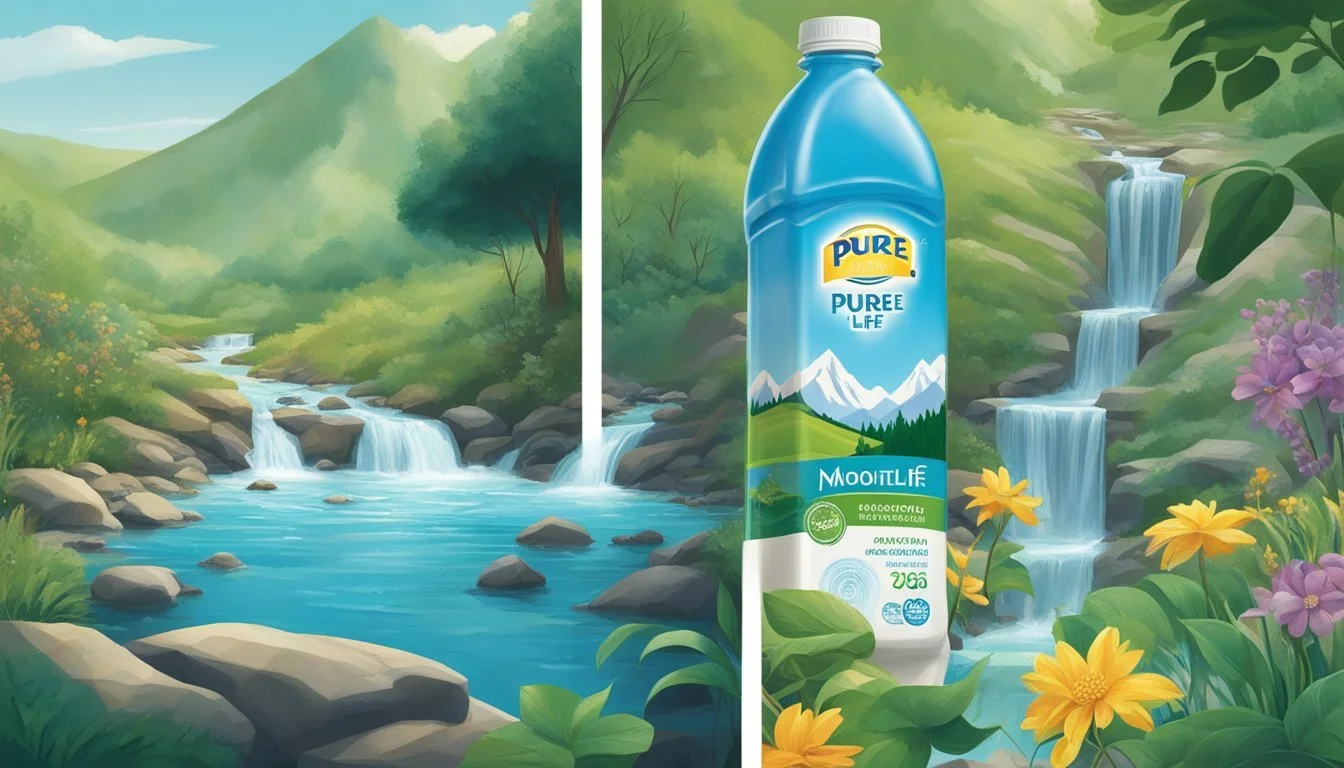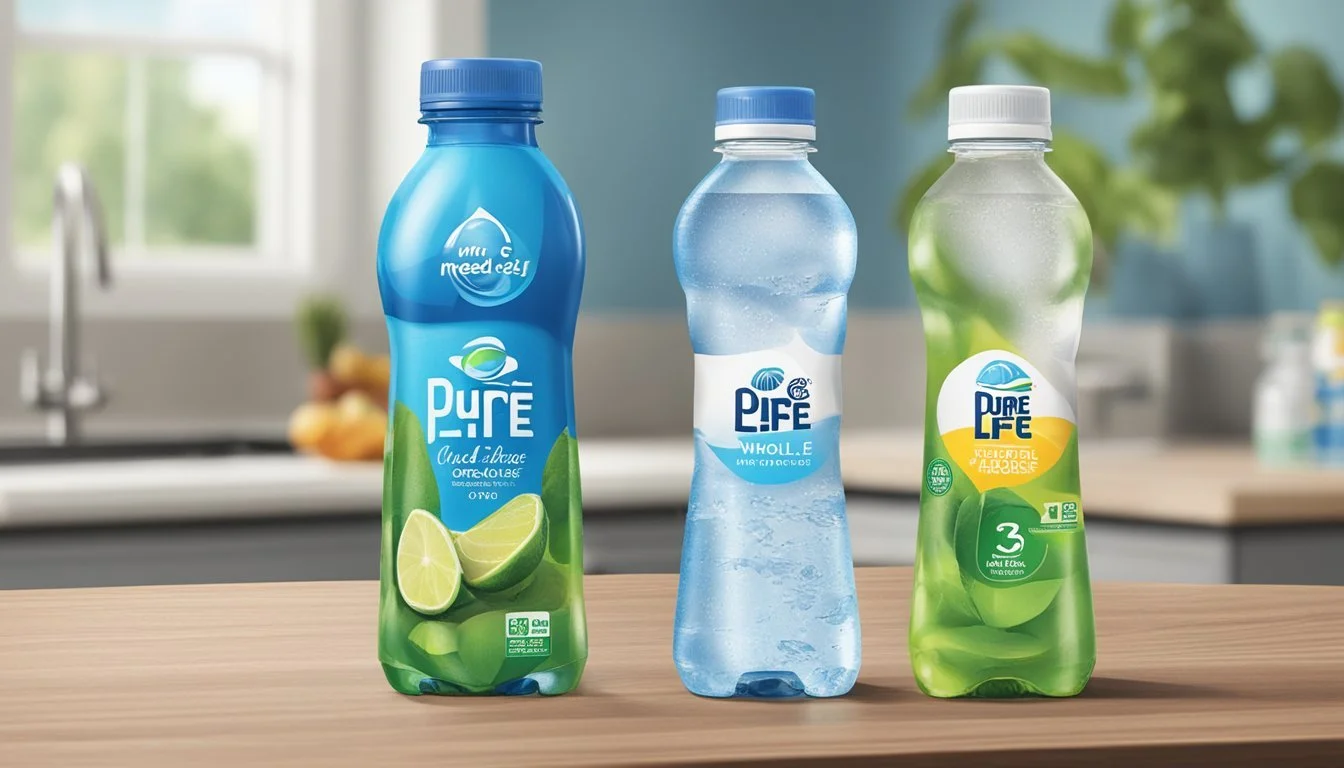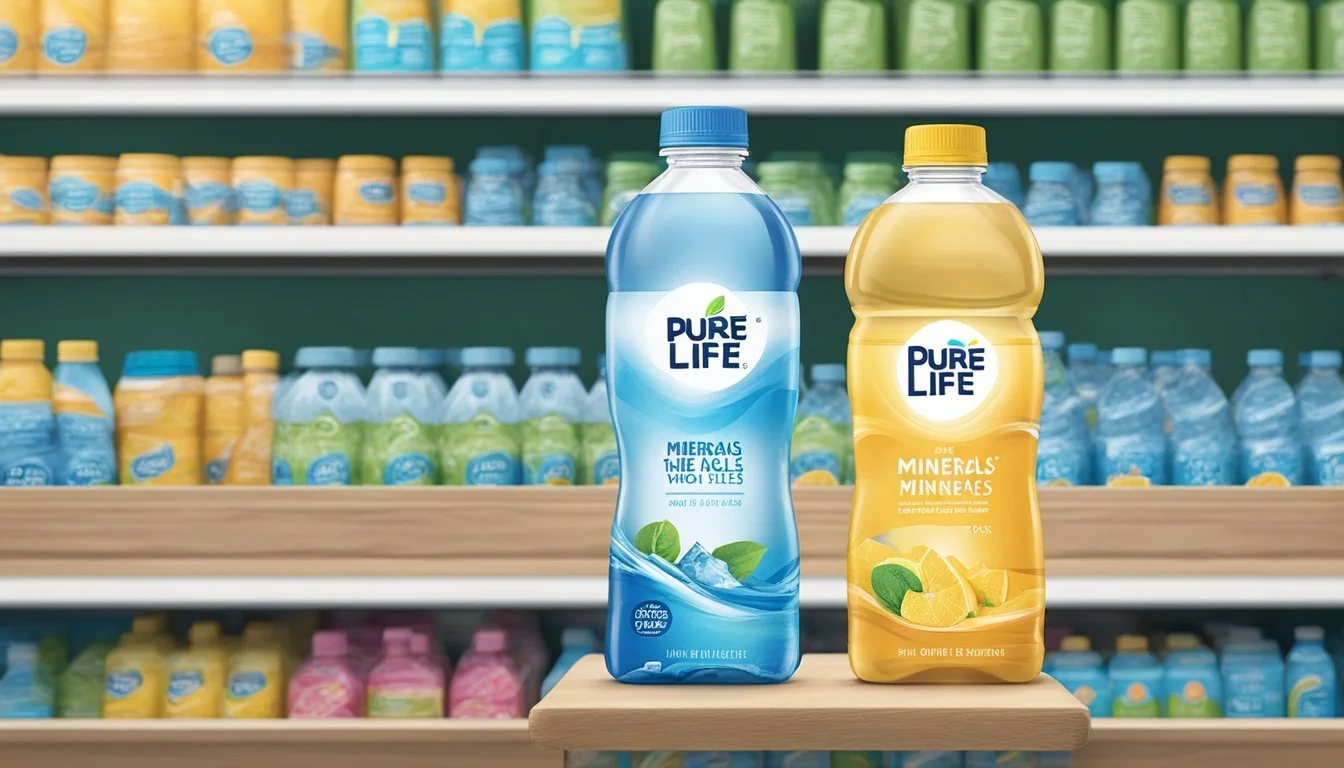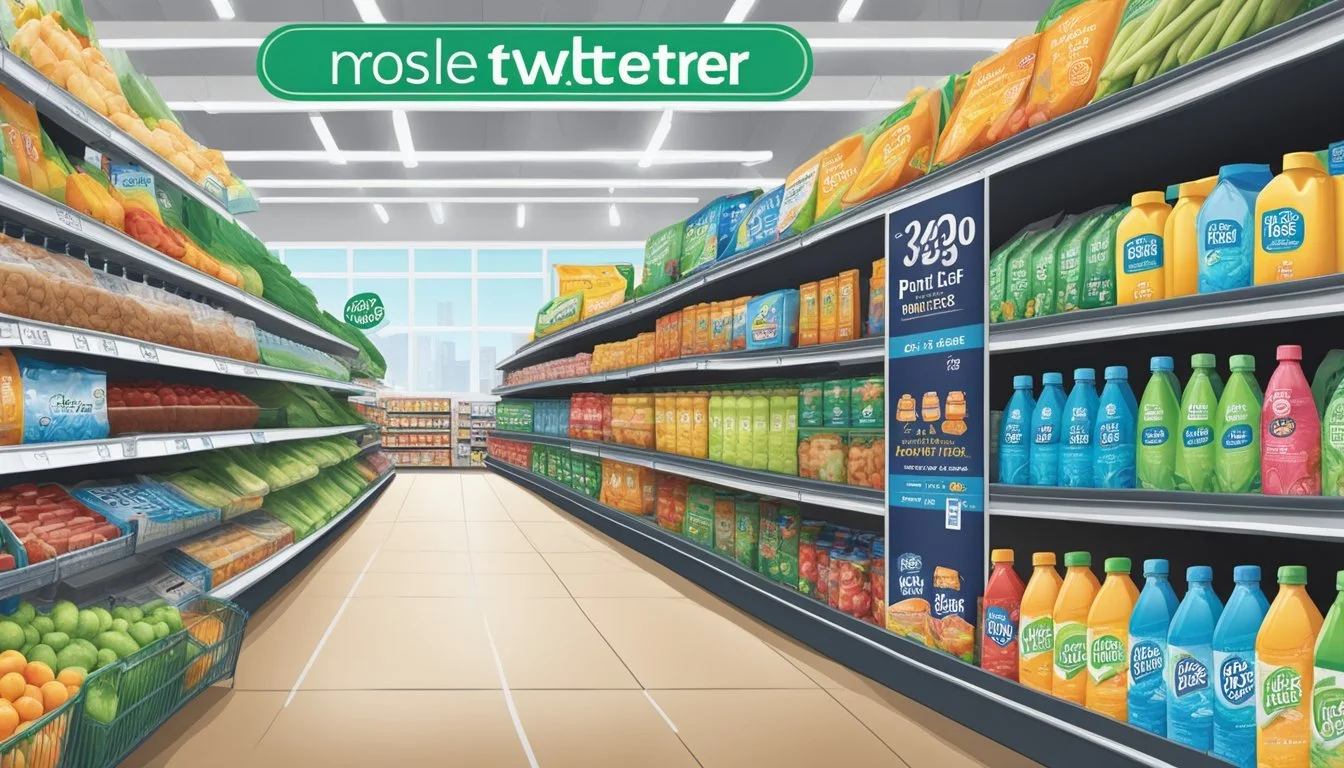Nestlé Pure Life vs. Whole Foods 365
Comparing Bottled Water Quality
Water is essential to life, and choosing the right bottled water can influence your hydration and health. In a direct comparison between Nestlé Pure Life and Whole Foods 365, Whole Foods 365 frequently stands out for its better taste and fewer aftertastes. Nestlé Pure Life, on the other hand, is widely recognized and easily accessible but may not always match up in flavor.
Discerning consumers also consider factors like sourcing, processing techniques, and environmental impact when selecting bottled water. Whole Foods 365, often noted for its spring water origins, provides a more natural taste profile, while Nestlé Pure Life offers the reliability of a well-known brand with various water sources.
Microplastics and other contaminants are another concern. Both brands maintain rigorous standards, but Whole Foods 365 receives more favorable reviews in this regard. Understanding these distinctions can help you make a more informed choice for your hydration needs.
The Importance of Hydration and Quality in Bottled Water
Hydration is essential for maintaining bodily functions, from regulating temperature to lubricating joints. Ensuring access to quality bottled water is vital for these health benefits.
Quality plays a significant role in bottled water. Consumers seek products that adhere to stringent purification processes. Nestlé Pure Life and Whole Foods 365 employ rigorous quality checks to guarantee safety and purity.
Water quality encompasses various factors including taste, mineral content, and the absence of contaminants. Bottled water brands like Nestlé Pure Life utilize multi-stage filtration, whereas Whole Foods 365 focuses on natural spring sources with added quality controls.
Safety is paramount in bottled water production. Both brands implement comprehensive safety protocols to minimize contamination risks, assuring consumers of a reliable hydration source.
Proper hydration supports cognitive functions, aids digestion, and maintains skin health. Bottled water brands that emphasize quality and safety contribute significantly to these health benefits.
Key Points:
Hydration: Crucial for health and daily functioning.
Quality: Ensures the water is clean and safe to drink.
Safety: Prevents contamination and guarantees safe consumption.
Maintaining high standards in bottled water production is not just about meeting regulatory requirements; it's about providing a product that supports overall health and well-being.
Comparing Water Sources: Origin and Purity
Understanding the origin and purity of bottled water is crucial for consumers. This section examines the sources of Nestlé Pure Life and Whole Foods 365, as well as their purity levels and potential contaminants.
Source Analysis: Natural Spring Water vs. Purified Water
Nestlé Pure Life sources its water from various municipal supplies and subjects it to extensive purification processes such as reverse osmosis and distillation.
Whole Foods 365 differs, sourcing its water from natural springs. Spring water is collected directly from natural underground sources and is typically subjected to minimal processing to maintain its natural mineral content.
Consumers choosing between these brands should consider whether they prefer water derived from a natural spring with preserved minerals or highly purified water with reduced mineral content.
Purity and Contaminant Levels in Bottled Water
Nestlé Pure Life applies rigorous purification techniques like reverse osmosis and distillation. These processes aim to eliminate contaminants including lead, arsenic, and other impurities. Regular testing ensures that the water meets strict safety standards.
Whole Foods 365 emphasizes the natural purity of its spring water. While still subject to testing for contaminants, this brand capitalizes on the natural filtration provided by the spring itself, potentially offering a different mineral profile compared to purified options.
In their testing, both brands seek to ensure low levels of harmful substances, providing consumers with safe and clean drinking water.
Scrutinizing the Brands: History and Practices
When comparing Nestlé Pure Life and Whole Foods 365 bottled water, it is crucial to understand the history, production practices, and packaging standards of each brand. These aspects highlight their dedication to quality, sustainability, and consumer health.
Brand Profiles: Nestlé and Whole Foods Market
Nestlé Waters is a division of Nestlé, the world's largest food and beverage company, founded in 1866. Nestlé Pure Life aims to provide purified water through stringent filtration processes. The brand holds a significant market share globally.
Whole Foods Market, established in 1980, is renowned for prioritizing natural and organic products. Its 365 Everyday Value line, including bottled water, upholds these values by emphasizing sustainability and health-conscious options.
Production Processes and Quality Control
Nestlé employs a multi-step filtration process for Pure Life, ensuring consistent taste and safety. The water undergoes reverse osmosis, distillation, and mineral addition, followed by rigorous quality checks. This ensures the removal of contaminants and adherence to safety standards.
Whole Foods 365 water is sourced from natural springs and purified using similar advanced methods. Quality control is equally stringent, with regular testing and adherence to high safety protocols. The focus is on minimal processing to maintain the water's natural properties.
Bottling and Packaging Standards
Nestlé Pure Life uses recyclable PET bottles and promotes recycling efforts to reduce environmental impact. Their packaging process ensures minimal contamination and maintains water quality. They have initiatives aimed at increasing the use of recycled materials.
Whole Foods 365 emphasizes eco-friendly packaging, often using BPA-free and recyclable materials. The brand supports sustainable practices by minimizing plastic use and encouraging customers to recycle. Packaging is designed to ensure safety and purity while reflecting the brand’s commitment to the environment.
Taste and Water Texture: Evaluating Consumer Preferences
Consumers often compare bottled waters based on taste and texture. Nestlé Pure Life is known for its neutral taste, achieved through the addition of minerals. This makes it a suitable choice for those who prefer water with a balanced flavor.
Whole Foods 365 offers a variety of spring and mineral waters. The taste can vary depending on the source, but many describe it as more natural and crisp compared to purified water like Nestlé Pure Life.
Texture is another important factor. Nestlé Pure Life generally has a smooth texture due to its purification process and added minerals. In contrast, Whole Foods 365, particularly its spring water, may have slight variations in texture based on the natural minerals present in the source water.
Brand Taste Texture Nestlé Pure Life Balanced with added minerals Smooth and consistent Whole Foods 365 Natural, varies by source Slightly varied, more natural
While some consumers seek out carbonated water for a bit of fizz, both brands typically offer still water varieties. Nestlé Pure Life focuses on purified water, while Whole Foods 365 tends to emphasize natural spring sources.
When analyzing preferences, the presence of electrolytes and minerals can be pivotal. Nestlé Pure Life adds these elements to achieve its distinct taste. Whole Foods 365 waters are rich in natural minerals depending on their source.
For those who prefer alkaline water, the natural sources of Whole Foods 365 may appeal due to their typically higher pH levels.
Consulting a water sommelier could provide deeper insights into the subtle differences in taste and texture between these brands, aiding consumers in making an informed choice.
Bottled Water Additives: Minerals and Electrolytes
Nestlé Pure Life and Whole Foods 365 both include various minerals and electrolytes that can influence taste and nutritional value.
Nestlé Pure Life adds several minerals to its purified water. The key minerals included are:
Calcium chloride
Sodium bicarbonate
Magnesium sulfate
These minerals can enhance the taste and support hydration.
Whole Foods 365 bottled water includes:
Calcium
Magnesium
Potassium bicarbonate
These added electrolytes are beneficial for maintaining bodily functions and can contribute to a balanced taste.
Mineral Purpose Nestlé Pure Life Whole Foods 365 Calcium Bone health, muscle function Yes Yes Magnesium Metabolic reactions, muscle function Yes Yes Potassium Fluid balance, nerve signals No Yes Sodium Bicarbonate Electrolyte balance, taste enhancement Yes No Magnesium Sulfate Hydration, laxative effect Yes No
Both brands aim to optimize hydration by incorporating these essential minerals and electrolytes, which can affect both health benefits and sensory experiences.
Health and Safety Standards: Ensuring Drinkability
Both Nestlé Pure Life and Whole Foods 365 prioritize stringent health and safety standards to ensure drinkability. Their safety measures are influenced by federal regulations and certifications focusing on consumer trust and water quality.
Government Regulation and Bottle Safety
Federal government regulations play a crucial role in maintaining the safety of bottled water. Nestlé Pure Life and Whole Foods 365 must comply with the Food and Drug Administration (FDA) guidelines, which classify bottled water as a food product. The FDA mandates rigorous testing for contaminants like microplastics, chemicals, and pathogens.
These brands also adhere to standards set by the Environmental Protection Agency (EPA) concerning water sources. Bottled waters use multiple-stage filtration processes to remove impurities. Additionally, the bottling plants undergo regular inspections to ensure compliance with safety protocols. Both brands claim their bottling processes minimize contamination risks, ensuring consumer safety.
Certifications and Consumer Trust
Certifications from reputable organizations enhance consumer trust by validating the safety and quality of bottled water. Both Nestlé Pure Life and Whole Foods 365 often seek endorsements from the International Bottled Water Association (IBWA). The IBWA’s standards go beyond federal requirements, emphasizing ethical considerations and values in water production.
These certifications assure consumers that the water is not just safe but of high quality. Continuous quality checks and audits are also integral to maintaining certification status. Public transparency through published reports on water quality tests further builds trust.
Consumers are increasingly aware of where their water comes from and how it is processed. Knowing that reputable certifications back their bottled water helps them make informed choices, reinforcing the importance of certifications in the market.
Market Analysis: Bottled Water Brands Competition
The bottled water industry is highly competitive, with numerous brands vying for consumer preference. Factors like taste, purity, and brand reputation play crucial roles in shaping the market dynamics.
Comparing Major Bottled Water Brands
Major brands such as Nestlé Pure Life, Dasani, and Poland Spring are prominent players in the market. Nestlé Pure Life focuses on consistent taste through advanced purification methods, while Dasani is known for its distinctive mineral flavor owing to added electrolytes.
Poland Spring emphasizes its heritage and natural spring sources. Aquafina and Smartwater, both owned by PepsiCo, also hold significant shares with their emphasis on purity and added benefits like electrolytes.
Premium Brands vs. Store Brands
Premium brands like Evian, Fiji, and Icelandic Glacial are often marketed on their unique sources and perceived health benefits. They command higher prices due to their exclusivity and sourcing from specific locations such as the French Alps (Evian) or the volcanic rock of Fiji.
In contrast, store brands like Whole Foods 365 offer a cost-effective alternative without compromising on quality. These brands provide an economical choice, targeting budget-conscious consumers looking for reliable bottled water options.
International Brands and Market Share
Coca-Cola's Dasani and PepsiCo's Aquafina dominate the global market, with Dasani holding a 12 percent share and Aquafina being a close competitor. European brands like Evian and Aqua Panna also have substantial international presence, appealing to consumers with their high-quality sources.
Japanese brand Penta and Icelandic brand Icelandic Glacial cater to niche markets with their unique properties and health benefits. As the global bottled water market continues to grow, international brands leverage their branding and unique sources to capture diverse consumer bases.
Environmental Considerations and Brand Initiatives
Environmental considerations have become a significant factor in evaluating bottled water brands. Nestlé Pure Life and Whole Foods 365 each have distinct approaches to sustainability and reducing environmental impact.
The Impact of Bottled Water on the Environment
Bottled water has a considerable environmental footprint. Plastic bottles, which are the most common packaging, contribute significantly to pollution. The production process uses large amounts of energy and water, leading to high carbon emissions.
Furthermore, a large percentage of plastic bottles are not recycled and end up in landfills or oceans, causing long-term environmental damage. Alternatives like glass bottles and boxed water options have lower ecological impacts but are less commonly used.
Sustainability Efforts of Water Brands
Nestlé Pure Life has initiated several programs to improve sustainability. They focus on lightweighting their plastic bottles to reduce materials used. Additionally, the brand aims to make 100% of its packaging recyclable or reusable by 2025.
Whole Foods 365 takes a slightly different approach. They emphasize sourcing water sustainably and offer options like boxed water to reduce plastic use. Their packaging often includes higher percentages of recycled materials. Whole Foods also focuses on transparency in their sustainability practices to ensure that consumers can make informed choices.
Both brands are making strides, but differences in their approaches may impact consumer preferences based on individual environmental priorities.
Consumer Choices: Convenience, Availability, and Affordability
Nestlé Pure Life is known for its extensive availability. As a product of the world's largest bottled water company, it is found in countless grocery stores and vending machines. This wide distribution makes Nestlé Pure Life a convenient option for many consumers.
Whole Foods 365 bottled water, on the other hand, is primarily available at Whole Foods stores. While Whole Foods has a strong presence in many regions, it does not match the ubiquitous availability of Nestlé Pure Life. Thus, for those prioritizing local and organic products, Whole Foods 365 is often the choice.
Affordability plays a significant role in consumer decisions. Nestlé Pure Life is frequently recognized for its budget-friendly pricing, making it an accessible option for many households.
Whole Foods 365 bottled water tends to be priced slightly higher, reflecting the brand's emphasis on quality and organic standards. Consumers who prioritize affordability may lean towards Nestlé Pure Life, whereas those who value organic options might choose Whole Foods 365 despite its higher cost.
Convenience extends beyond availability and price. Nestlé Pure Life often comes in various packaging sizes, catering to different needs, from small bottles for individual use to larger ones for family gatherings.
Whole Foods 365 also offers multiple packaging options, but the range may be less extensive compared to Nestlé Pure Life. This aspect can influence consumer priorities, depending on their specific requirements.
In summary, Nestlé Pure Life excels in availability and affordability, while Whole Foods 365 caters to those who prioritize organic quality and are willing to visit specific stores for their purchases.
More About Nestlé Pure Life
Acqua Panna vs Nestle Pure Life: Which Bottled Water is Better?
Aquafina vs Nestle Pure Life: Which Bottled Water is Better?
Arrowhead vs Nestle Pure Life: Which Bottled Water is Better?
Boxed Water vs Nestle Pure Life: Which Bottled Water is Better?
Core Hydration vs Nestle Pure Life: Which Bottled Water is Better?
Deer Park vs Nestle Pure Life: Which Bottled Water is Better?
Essentia vs Nestle Pure Life: Which Bottled Water is Better?
Ice Mountain vs Nestle Pure Life: Which Bottled Water is Better?
Icelandic Glacial vs Nestle Pure Life: Which Bottled Water is Better?
Just Water vs Nestle Pure Life: Which Bottled Water is Better?
Mountain Valley Spring Water vs Nestle Pure Life: Which Bottled Water is Better?
Nestle Pure Life vs 1907water: Which Bottled Water is Better?
Nestle Pure Life vs 7-Select: Which Bottled Water is Better?
Nestle Pure Life vs Alkaline88: Which Bottled Water is Better?
Nestle Pure Life vs Antipodes: Which Bottled Water is Better?
Nestle Pure Life vs Aqua Carpatica: Which Bottled Water is Better?
Nestle Pure Life vs Big Chill: Which Bottled Water is Better?
Nestle Pure Life vs BodyArmor: Which Bottled Water is Better?
Nestle Pure Life vs Cascade Mountain: Which Bottled Water is Better?
Nestle Pure Life vs Castle Rock: Which Bottled Water is Better?
Nestle Pure Life vs CBD Living: Which Bottled Water is Better?
Nestle Pure Life vs Crystal Geyser: Which Bottled Water is Better?
Nestle Pure Life vs Crystal Lake: Which Bottled Water is Better?
Nestle Pure Life vs Essence pH10: Which Bottled Water is Better?
Nestle Pure Life vs Hawaii Volcanic: Which Bottled Water is Better?
Nestle Pure Life vs Hawaiian Springs: Which Bottled Water is Better?
Nestle Pure Life vs Kirkland Signature: Which Bottled Water is Better?
Nestle Pure Life vs Liquid Death: Which Bottled Water is Better?
Nestle Pure Life vs Mananalu: Which Bottled Water is Better?
Nestle Pure Life vs Open Water: Which Bottled Water is Better?
Nestle Pure Life vs Poland Spring: Which Bottled Water is Better?
Nestle Pure Life vs Proud Source: Which Bottled Water is Better?
Nestle Pure Life vs Pure Life: Which Bottled Water is Better?
Nestle Pure Life vs Purely Sedona: Which Bottled Water is Better?
Nestle Pure Life vs Refreshe: Which Bottled Water is Better?
Nestle Pure Life vs Richard's Rainwater: Which Bottled Water is Better?
Nestle Pure Life vs San Pellegrino: Which Bottled Water is Better?
Nestle Pure Life vs Simple Truth: Which Bottled Water is Better?
Nestle Pure Life vs Smartwater: Which Bottled Water is Better?
Nestle Pure Life vs Solan de Cabras: Which Bottled Water is Better?
Nestle Pure Life vs Talking Rain AQA: Which Bottled Water is Better?
Nestle Pure Life vs The Well: Which Bottled Water is Better?
Nestle Pure Life vs Topo Chico: Which Bottled Water is Better?
Nestle Pure Life vs Tru Alka: Which Bottled Water is Better?
Nestle Pure Life vs Weird Water: Which Bottled Water is Better?
Nestle Pure Life vs Whole Foods Italian Still Mineral water: Which Bottled Water is Better?
Nestle Pure Life vs Zephyrhills: Which Bottled Water is Better?
More About Whole Foods 365
Acqua Pana vs Whole Foods 365: Which Bottled Water is Better?
Alkaline88 vs Whole Foods 365: Which Bottled Water is Better?
Antipodes vs Whole Foods 365: Which Bottled Water is Better?
Aqua Carpatica vs Whole Foods 365: Which Bottled Water is Better?
Arrowhead vs Whole Foods 365: Which Bottled Water is Better?
Big Chill vs Whole Foods 365: Which Bottled Water is Better?
Boxed Water vs Whole Foods 365: Which Bottled Water is Better?
Cascade Mountain vs Whole Foods 365: Which Bottled Water is Better?
Castle Rock vs Whole Foods 365: Which Bottled Water is Better?
Core Hydration vs Whole Foods 365: Which Bottled Water is Better?
Crystal Geyser vs Whole Foods 365: Which Bottled Water is Better?
Deer Park vs Whole Foods 365: Which Bottled Water is Better?
Hawaii Volcanic vs Whole Foods 365: Which Bottled Water is Better?
Hawaiian Springs vs Whole Foods 365: Which Bottled Water is Better?
Ice Mountain vs Whole Foods 365: Which Bottled Water is Better?
Icelandic Glacial vs Whole Foods 365: Which Bottled Water is Better?
Just Water vs Whole Foods 365: Which Bottled Water is Better?
Liquid Death vs Whole Foods 365: Which Bottled Water is Better?
Mountain Valley Spring Water vs Whole Foods 365: Which Bottled Water is Better?
Open Water vs Whole Foods 365: Which Bottled Water is Better?
Poland Spring vs Whole Foods 365: Which Bottled Water is Better?
Pure Life vs Whole Foods 365: Which Bottled Water is Better?
Purely Sedona vs Whole Foods 365: Which Bottled Water is Better?
Richard's Rainwater vs Whole Foods 365: Which Bottled Water is Better?
San Pellegrino vs Whole Foods 365: Which Bottled Water is Better?
Simple Truth vs Whole Foods 365: Which Bottled Water is Better?
Smartwater vs Whole Foods 365: Which Bottled Water is Better?
Solan de Cabras vs Whole Foods 365: Which Bottled Water is Better?
Talking Rain AQA vs Whole Foods 365: Which Bottled Water is Better?
Topo Chico vs Whole Foods 365: Which Bottled Water is Better?
Weird Water vs Whole Foods 365: Which Bottled Water is Better?
Whole Foods 365 vs 1907water: Which Bottled Water is Better?
Whole Foods 365 vs BodyArmor: Which Bottled Water is Better?
Whole Foods 365 vs CBD Living: Which Bottled Water is Better?
Whole Foods 365 vs Crystal Lake: Which Bottled Water is Better?
Whole Foods 365 vs Essence pH10: Which Bottled Water is Better?
Whole Foods 365 vs Kirkland Signature: Which Bottled Water is Better?
Whole Foods 365 vs Proud Source: Which Bottled Water is Better?
Whole Foods Italian Still Mineral water vs Whole Foods 365: Which Bottled Water is Better?
Zephyrhills vs Whole Foods 365: Which Bottled Water is Better?









